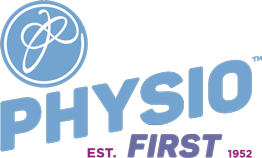Back Pain - Lumbago
Lower back pain - lumbago - is one of the most common reasons that people go to see their GP. Does this mean that lower back pain symptoms are something that you should be worried about?
Most of the time, the answer to the above question is 'no'. In fact, we know that the majority of lower back pain episodes will resolve spontaneously within 6-8 weeks, no matter what you do to manage them. We do also know, however, that treatment in the first 16 days from the start of your pain dramatically reduces that pain. It can also help reduce the risk of it coming back compared with those who don't have treatment.
There are hundreds of structures in your lower back, and the vast majority of these structures have the potential to cause pain if acutely damaged or if chronically, mechanically stressed. These include discs, joints, nerves, muscles, ligaments, bones and tendons. Some of these structures are tiny and some are large, all bound together in a small area that we term the lumbo-pelvic region.
Diagnosing, on a structure specific basis is really tough, even if you have an MRI scan. In fact, MRI scans can sometimes lead to more confusion about why you might have pain. This is due to MRI scans having a high false positive rate. Having a high false positive rate means that there is a high likelihood of the scan showing a 'positive finding' such as a disc bulge, or degenerative joint, even if you have never had lower back pain. It has been suggested that this rate of lack of correlation between symptoms and MRI findings is as high as 60-80%, meaning that 60-80/100 people that read this who have never had lower back pain will likely have some findings worthy of comment on a radiologist's report.
Recent research has also looked in to neurological mechanisms of lower back pain. There is a growing body of knowledge that supports that fact that not all lower back pain comes from your lower back! Instead situational, environmental and psychological factors can all be the main driver behind lower back pain. For example, commonly patients report that they have been stressed at work and suddenly they get lower back pain. In this situation, stress hasn't 'damaged' their spine, but instead the stress has caused increased muscle tension and also changed the way their pain system interprets neurological stimulus from their lower back. So much so that the threshold at which their pain system fires off a pain response changes to a point whereby a previously non-painful stimulus now becomes painful, and thus creating lower back pain.
As you can see, lower back pain is complex and can be a minefield when trying to find appropriate treatment. We know that certain manipulative/hands on treatments can expedite recovery in certain patient groups. We also know that appropriate exercise improves the speed of recovery. However, the best outcomes are achieved when both of the above techniques are combined.
The skill in treating lower back pain is taking the infinitely complex, and making it simple.
At Ealing Physio we have spinal specialist therapists that can do exactly that. You are in expert hands when you walk through our door and we are confident that you will be given the best possible and most cutting edge treatment for your lower back pain, whatever its cause!
For more information on the conditions we treat and services we offer, or to book an appointment please call
020 8847 1887 or email us at reception@ealingphysio.co.uk








